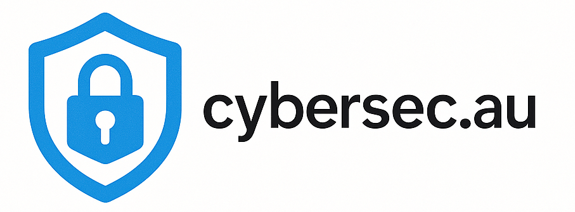Your business security is only as strong as your weakest vendor. Supply chain attacks have become one of the most effective ways for cybercriminals to breach Australian businesses, turning trusted partners into unwitting attack vectors. Understanding and managing these risks is now essential for every business leader.
🔗 The Modern Business Ecosystem
Your Business
Core systems & data
Each connection represents a potential entry point for cybercriminals
Why Supply Chain Attacks Are So Effective
Think about it: why would a hacker try to break down your front door when they can walk through your vendor's open window? Supply chain attacks work because they exploit the trust relationships that make modern business possible.
The Trust Factor
Businesses naturally trust their vendors and partners. This trust creates security blind spots:
- Assumed security: We assume our vendors have good security
- Limited visibility: We can't see inside our vendors' security practices
- Inherited risk: Their security problems become our security problems
- Cascading impact: One compromised vendor can affect multiple customers
Recent High-Profile Examples
Supply chain attacks have made headlines globally, and Australian businesses haven't been immune:
- SolarWinds (2020): Affected thousands of organizations worldwide, including Australian government agencies
- Kaseya (2021): Ransomware attack affected over 1,500 downstream companies
- Log4j vulnerability (2021): Widespread vulnerability in commonly used software library
- MOVEit attacks (2023): File transfer software compromise affected hundreds of organizations
Common Supply Chain Attack Vectors
Software Supply Chain Attacks
Attackers compromise software before it reaches your business:
- Malicious updates: Legitimate software updates containing malware
- Compromised repositories: Attacks on code repositories and package managers
- Third-party libraries: Vulnerabilities in commonly used code libraries
- Development environment compromise: Attacks on software vendors' development systems
Service Provider Compromises
When your service providers get hacked, you get hacked too:
- Cloud service breaches: Compromise of cloud infrastructure providers
- Managed service attacks: MSP compromises affecting multiple clients
- Email service breaches: Compromise of email hosting providers
- Backup service attacks: Attacks on backup and recovery providers
📈 Typical Supply Chain Attack Flow
Target Selection
Attackers identify vendors with access to multiple high-value targets
Vendor Compromise
Breach the vendor's systems using traditional attack methods
Lateral Movement
Use vendor access to reach customer systems and data
Mass Impact
Single breach affects hundreds or thousands of businesses
Building Supply Chain Resilience
Vendor Risk Assessment
Not all vendors pose the same risk. Develop a risk-based approach to vendor management:
- Critical vendors: Those with access to sensitive data or critical systems
- High-risk vendors: Those with poor security track records or practices
- Low-risk vendors: Limited access or non-critical services
Security Due Diligence Questions
Ask your vendors these essential security questions:
- What cybersecurity certifications do you maintain (ISO 27001, SOC 2)?
- How do you protect customer data and ensure data sovereignty?
- What is your incident response process and notification timeline?
- Do you have cyber insurance and what does it cover?
- How often do you conduct security assessments and penetration testing?
- What happens to our data if your company is acquired or goes out of business?
Contractual Security Requirements
Build security into your vendor contracts:
- Security standards: Require specific security controls and certifications
- Incident notification: Mandatory breach notification within 24 hours
- Audit rights: Right to audit vendor security practices
- Data protection: Specific requirements for data handling and protection
- Liability clauses: Clear responsibility for security breaches
Monitoring and Detection
Continuous Vendor Monitoring
Security assessment isn't a one-time activity. Implement ongoing monitoring:
- Security ratings: Use third-party security rating services
- Threat intelligence: Monitor for vendor-related security incidents
- Dark web monitoring: Watch for vendor credentials on dark web markets
- Regular reassessment: Annual or bi-annual security reviews
Internal Monitoring
Monitor how vendors access your systems:
- Access logging: Track all vendor access to your systems
- Behavioral monitoring: Watch for unusual vendor activity patterns
- Network segmentation: Isolate vendor access from critical systems
- Privileged access management: Control and monitor vendor administrative access
Working with Cybersecurity Partners
Managing supply chain risk is complex and requires expertise. Many Australian businesses partner with cybersecurity specialists like Affinity MSP for comprehensive supply chain security services including:
- Vendor security assessment and due diligence
- Third-party risk monitoring and management
- Supply chain incident response planning
- Contract security review and guidance
- Continuous vendor security monitoring
The Bottom Line
Supply chain cybersecurity isn't just about protecting your business—it's about protecting your customers, partners, and the broader business ecosystem. As cyber attacks become more sophisticated, the businesses that survive and thrive will be those that take a proactive approach to supply chain security.
Start by understanding your vendor ecosystem, assessing the risks, and implementing appropriate controls. Remember: in today's interconnected world, your security is only as strong as your weakest vendor.
Secure Your Supply Chain
Supply chain security requires specialized expertise and ongoing monitoring. Get professional guidance on protecting your vendor relationships from Australia's cybersecurity specialists.
Get Free Security Scan